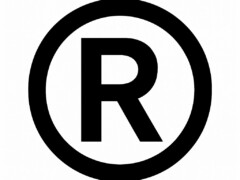A response to an FDA Warning Letter requires a delicate balance between competing principles. Food manufacturer’s need to assert their regulatory rights – assertively, but respectfully. They also need to demonstrate a sincere allocation of resources to addressing FDA’s concerns. Throughout the response process, firms need to maintain information discipline that does not inadvertently expose the company to additional liability. Here’s what a Warning Letter means—and how to should respond with impact.
Bottom line, up front – the ultimate goal of the response is to begin to rehabilitate the reputation of the manufacturer.
What Is an FDA Warning Letter?
An FDA Warning Letter is a formal notification from the U.S. Food and Drug Administration that outlines violations of regulatory significance found during inspections or other forms of FDA oversight. These letters are issued when the FDA determines that a manufacturer is significantly out of compliance with federal laws and regulations, most notably the Federal Food, Drug, and Cosmetic Act (FDCA). For companies in the food and dietary supplement industries, Warning Letters typically cite violations such as improper labeling, unsubstantiated health claims, unsanitary processing conditions, or failures in preventive control programs. The Warning Letter serves as a public record of the FDA’s concerns and often signals that the company is on a path toward more severe enforcement if the issues are not promptly and adequately corrected.
Manufacturer’s Response to FDA Warning Letter
Receiving a Warning Letter does not mean the FDA has made a final legal determination of guilt or liability. Rather, it is considered an informal and advisory enforcement tool. Importantly, manufacturers maintain several administrative rights during this process.
- First, they have the right to respond to the FDA’s allegations—typically within 15 business days—with a corrective action plan and supporting documentation.
- Second, manufacturers may challenge the findings in the Warning Letter by presenting factual counter-evidence and legal argument, especially if they believe the FDA’s interpretations are inconsistent with law or prior enforcement precedent.
Additionally, the FDA’s own Regulatory Procedures Manual (RPM Chapter 4) affirms that Warning Letters should only be issued when significant violations are observed and when voluntary compliance is reasonably likely. The RPM explicitly acknowledges that manufacturers have the right to submit rebuttal evidence, request withdrawal of the Warning Letter under certain conditions, and seek further clarification on ambiguous or disputed findings. In practice, this means manufacturers must respond strategically, with both urgency and legal precision, to preserve their regulatory standing and mitigate business risk.
What First Steps Need to Be Taken
Hiring an attorney to manage a FDA Warning Letter response offers a critical layer of confidentiality. Under the RPM, manufacturers have the right to refute the factual findings of the FDA. When labs and consultants are retained through legal counsel to help present these facts, their reports and testing data may be protected under attorney-client privilege. Sensitive scientific findings—especially those that might reveal compliance gaps—are then shielded from public disclosure or government discovery. By working through an attorney, businesses gain both legal strategy and confidentiality, reducing risk while building a compliant response.
Content of the Response to FDA Warning Letter
When responding to an FDA Warning Letter, tone matters. An appropriate response should reflect immediate engagement and a sense of urgency on the part of the manufacturer. The manufacturer must convey clear signs that it is allocating real resources—financial and intellectual—to address the cited deficiencies. This includes identifying root causes, implementing systemic fixes, and showing that the company understands the regulatory expectations.
At the same time, companies must strike a careful balance. The response should show respect for FDA priorities and a willingness to be accountable where appropriate. However, the manufacturer must also avoid unnecessary admissions that could increase legal exposure. Every sentence in a Warning Letter response is potentially a public document—accessible to retailers, commercial partners, and potential litigants. Businesses must write with the same care they would use in any external communication. What they say to the FDA may be read far beyond the walls of the Administration.
The End Goal
The best response to a Warning Letter will rehabilitate the company’s reputation without creating additional regulatory exposure.
Our subscription service
Clients realize the greatest value out of our services when they stack them together comprehensively. Our subscription-based service plans enable our clients to weave our services into the fabric of their businesses at affordable and predictable rates.
















